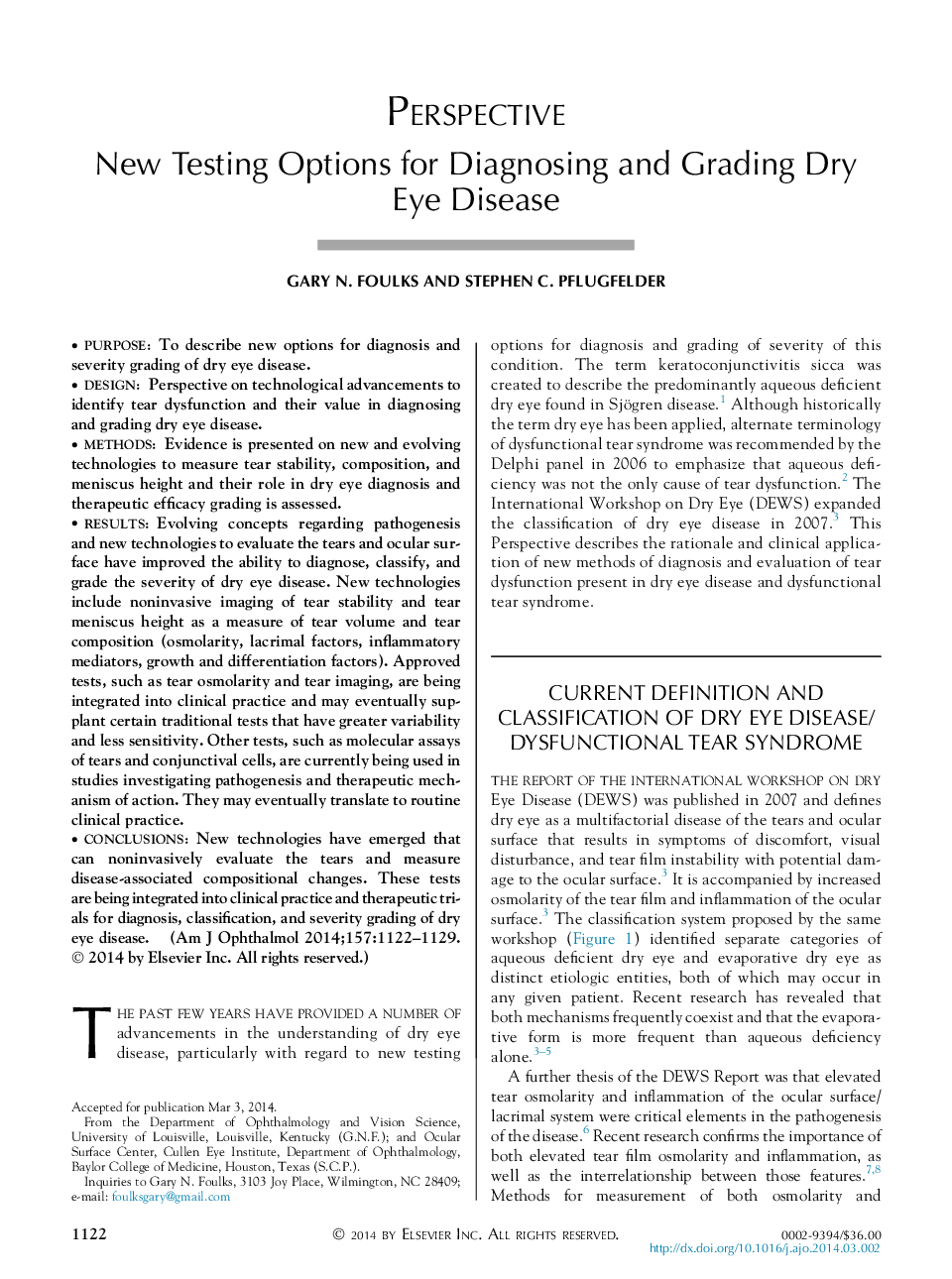| Article ID | Journal | Published Year | Pages | File Type |
|---|---|---|---|---|
| 4002150 | American Journal of Ophthalmology | 2014 | 8 Pages |
PurposeTo describe new options for diagnosis and severity grading of dry eye disease.DesignPerspective on technological advancements to identify tear dysfunction and their value in diagnosing and grading dry eye disease.MethodsEvidence is presented on new and evolving technologies to measure tear stability, composition, and meniscus height and their role in dry eye diagnosis and therapeutic efficacy grading is assessed.ResultsEvolving concepts regarding pathogenesis and new technologies to evaluate the tears and ocular surface have improved the ability to diagnose, classify, and grade the severity of dry eye disease. New technologies include noninvasive imaging of tear stability and tear meniscus height as a measure of tear volume and tear composition (osmolarity, lacrimal factors, inflammatory mediators, growth and differentiation factors). Approved tests, such as tear osmolarity and tear imaging, are being integrated into clinical practice and may eventually supplant certain traditional tests that have greater variability and less sensitivity. Other tests, such as molecular assays of tears and conjunctival cells, are currently being used in studies investigating pathogenesis and therapeutic mechanism of action. They may eventually translate to routine clinical practice.ConclusionsNew technologies have emerged that can noninvasively evaluate the tears and measure disease-associated compositional changes. These tests are being integrated into clinical practice and therapeutic trials for diagnosis, classification, and severity grading of dry eye disease.
